Our Services
Cataract Surgery
Cataract is the clouding of the lens of the eye, that is typically clear, resulting in decreased vision (check our vision simulator). Even though it is a common condition particularly among the elderly, it is easily treatable. Our ophthalmologists can tell you whether cataract or another problem is the cause of your vision loss and can help you decide if cataract surgery is appropriate for you.
There are two main types of cataract surgery: Phacoemulsification and Extracapsular surgery. Our surgeons can explain the differences and help determine which one is suitable for you. Most cataract surgeries today are done by Phacoemulsification, also called "small incision cataract surgery".
Phacoemulsification is done using an operating microscope. The eyeball is entered through a small incision (2-2.5 mm). A circular opening is made in the anterior (front part) capsule of the lens. The lens material within the lens capsule is broken (emulsified) using high speed ultrasound waves. This broken down lens material is sucked out of the same probe.
Once all the lens material has been cleared a foldable intraocular lens (IOL) is injected through the small incision and is placed within the remaining portion of the lens capsule. The lens unfolds in the capsular bag and is securely placed there. The IOL types available are monofocal, multifocal, toric and accommodating.
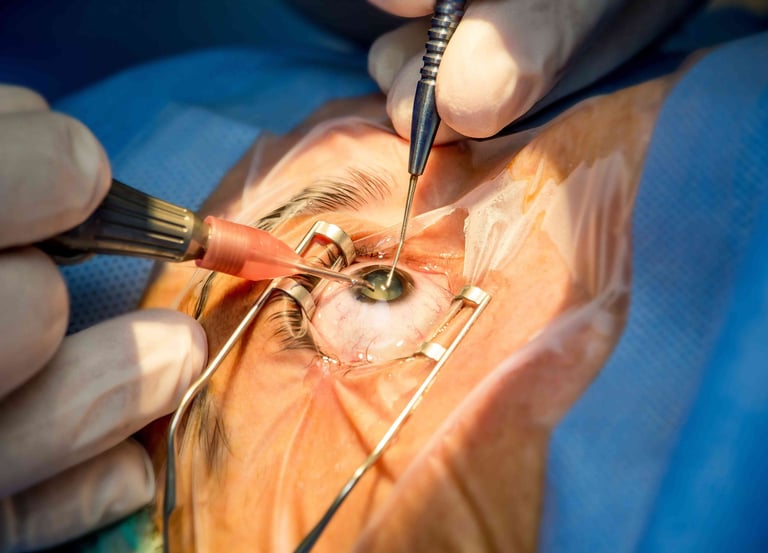

Contact Lenses
Contact lens, just like eyeglasses and LASIK, are the most common conventional methods for correcting refractive problems such as near sightedness, farsightedness, astigmatism and presbyopia.
Many people switch to wearing contact lenses as they find wearing glasses unattractive. Some switch due to special needs such as irregularly shaped cornea.
The Egyptian Eye Academy offers you the vast experience of over 35 years of its consultants in the field of contact lens fitting. They will examine your eyes thoroughly and choose the most suitable type for your condition. All major brands are available and at very competitive prices.


Diabetic Retinopathy Management
Diabetic Retinopathy is a complication of diabetes that affects the eyes (check our vision simulator). It is caused by high blood sugar levels damaging the blood vessels of the light-sensitive tissue at the back of the eye (retina).
To protect your vision, take prevention seriously. Start by carefully controlling your blood sugar level and scheduling yearly eye exams. You can contact us to arrange for an appointment with one of our expert doctors.
Treatment depends on the type of retinopathy. If you have nonproliferative diabetic retinopathy, you may not need treatment right away. However, your doctor will closely monitor your eyes to determine if you need treatment.
In case of proliferative diabetic retinopathy, you'll need prompt surgical treatment. Options available are laser treatments such as Focal Laser, Scatter Laser and PASCAL as well as intravitreal Anti-VEGF injections.
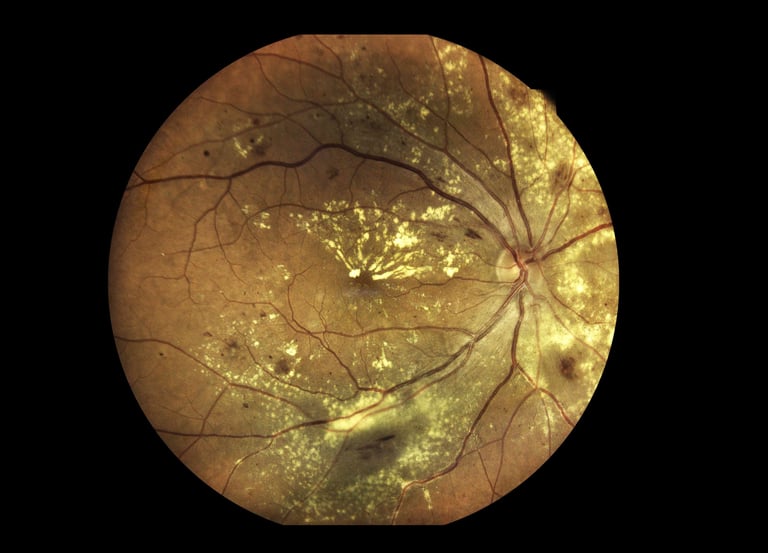

Glaucoma Management
Glaucoma is a disease of the optic nerve, which is the part of the eye that carries the images we see to the brain. The optic nerve is made up of many nerve fibers, like an electrical cable containing numerous wires. When damage to the optic nerve fibers occurs, blind spots develop (check our vision simulator). These blind spots usually go undetected until the optic nerve is significantly damaged. If the entire nerve is destroyed, blindness results.
We have a variety of diagnostic tools which aid in determining whether or not you have Glaucoma - even before you have any symptoms such as the tonometer and Ocular Response Analyzer® (ORA).
The goal of glaucoma treatment is to lower the pressure in your eye (intraocular pressure). Glaucoma can't be cured, and damage caused by the disease can't be reversed, but treatment and regular checkups can prevent vision loss in people with early glaucoma. Treatment options vary from eye drops and oral medications to surgery.


Keratoconus literally means “cone-shaped cornea”. The cornea is a very important part of your eye. Light enters the eye through the cornea, which refracts the light rays so that you can see clearly. With Keratoconus, the shape of the cornea is altered, distorting your vision. Keratoconus can make some activities difficult, such as driving, typing on a computer, watching television or reading.
Treatment often depends on the severity of the condition. During early stages, vision can be corrected with eyeglasses. As the condition progresses, rigid contacts may need to be worn so that light entering the eye is refracted evenly and vision is not distorted. Other options include corneal crosslinking as well as surgical procedures such as intracorneal ring segments and cornea transplant (keratoplasty).
Keratoconus Management
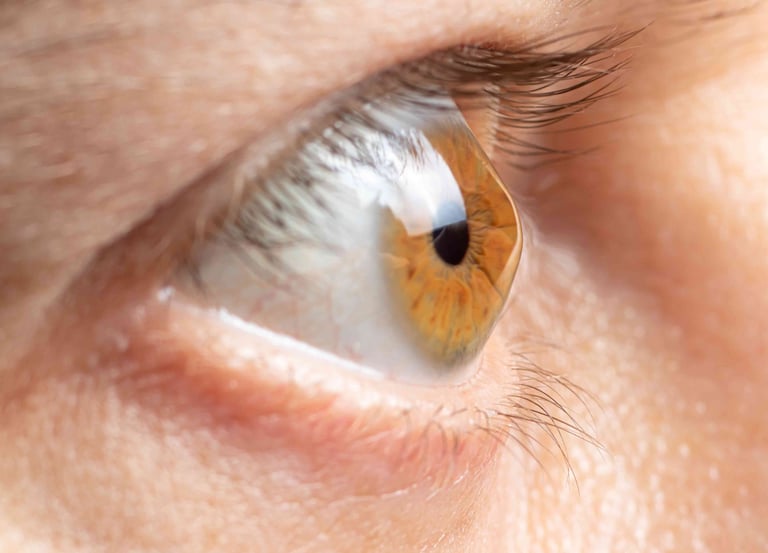

LASIK Surgery
If you wear glasses or contact lenses, you might think about surgery to correct your vision. In a LASIK procedure, a laser is used to reshape your cornea — the clear, round dome at the front of your eye — to improve the way your eye focuses light rays onto your retina. It is a very quick procedure with minimal to no discomfort. It takes minutes to operate on both eyes and you will be awake during the procedure.
Our well-trained medical staff have performed nearly 60,000 procedures. We acknowledge the primary importance of safety in refractive surgery. We ensure whether the patient is a good candidate for refractive surgery, and especially whether they are likely to be at risk for ectasia after surgery.
Our preoperative evaluation is of critical importance for success in LASIK surgeries. Our examination protocol fulfills 3 main purposes: counseling and educating the candidates, surgery planning, and screening for cases at higher risk for complications. It is critical to interview each refractive patient to assess their individual needs and to provide realistic expectations. A thorough ophthalmologic examination is mandatory, including specific complementary examinations to characterize many aspects of the cornea and the optics of the eye.
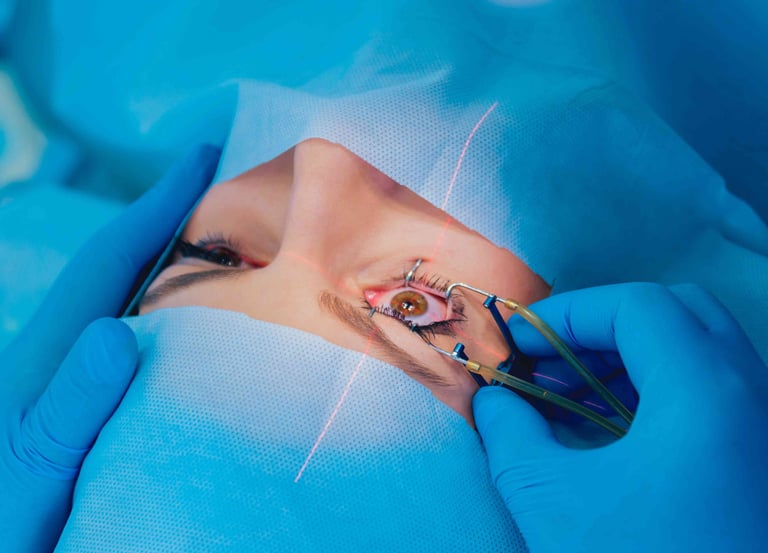

Oculoplastic Surgery
Oculoplastic surgery is specialized plastic surgery around the eyelids and face. It is also called oculo-facial surgery as the eyelids are continuous with the forehead, cheeks, and deals with the related tear system (lacrimal) and orbits (deeper structures surrounding the eyeball).
We provide a comprehensive range of services for eyelid, tearing and orbital conditions in children and adults. It includes aesthetic eyelid surgery, entropion, ptosis, tearing and orbital disorders and thyroid eye disease.
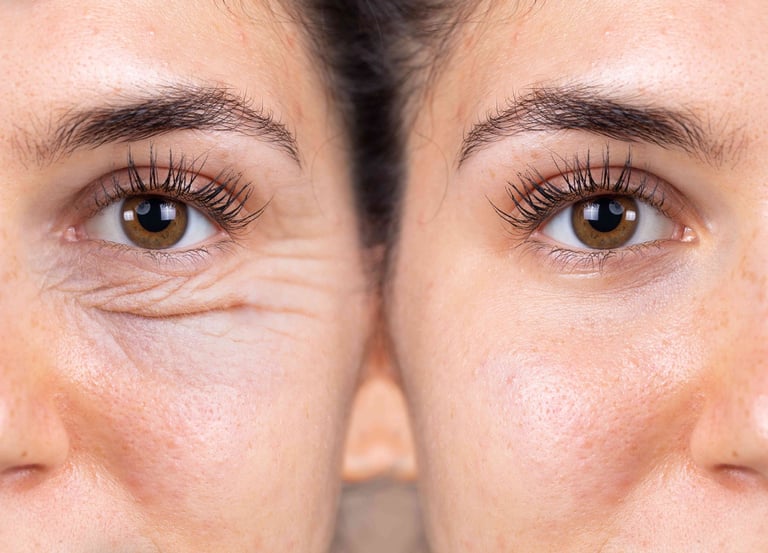

Vision Therapy
Vision therapy, also known as vision training, is used to improve vision skills such as eye movement control and eye coordination. It involves a series of procedures carried out in both home and office settings, usually under professional supervision.
Vision therapy can be prescribed when a comprehensive eye examination indicates that it is an appropriate treatment option for the patient. The specific program of therapy is based on the results of standardized tests, the needs of the patient, and the patient's signs and symptoms. Programs typically involve eye exercises and the use of lenses, prisms, filters, occluders, specialized instruments, and/or computer programs. The course of therapy may last weeks to several years, with intermittent monitoring by the doctor.
We are proud to be the only eye care hospital in Egypt and the Arab world to utilize Vision Therapy in treating amblyopia (lazy eye) and children with Autism. Our dedicated Vision Therapy center is supervised and directed by Prof. Mohamed Moussa, University of Waterloo, Ontario, Canada.
For further reading on Vision Therapy, kindly visit Prof. Mohamed Moussa’s website: http://moussaeyedoctor.com/
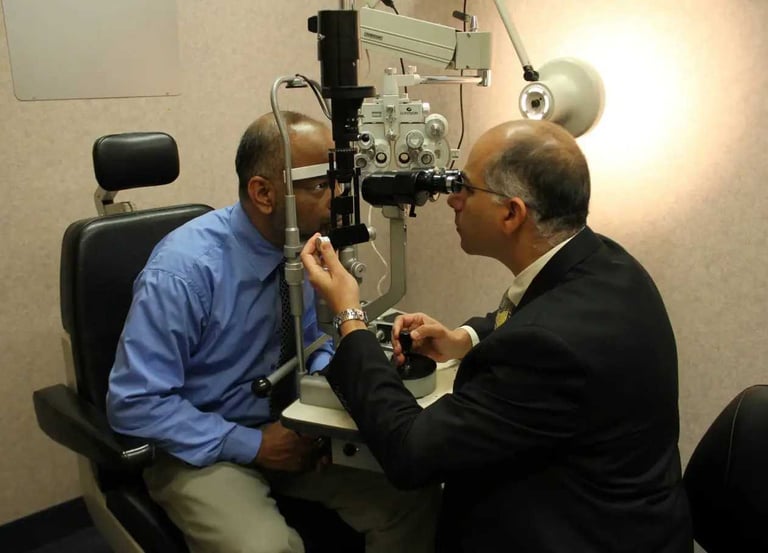

EGYPTIAN EYE ACADEMY
The Egyptian Eye Academy is a group of eye care centers, founded in 2005, that offers a comprehensive set of services to diagnose & treat eye disorders. We are committed to improving our patients’ quality of life and alleviating their pains.
© 2025. All rights reserved.

